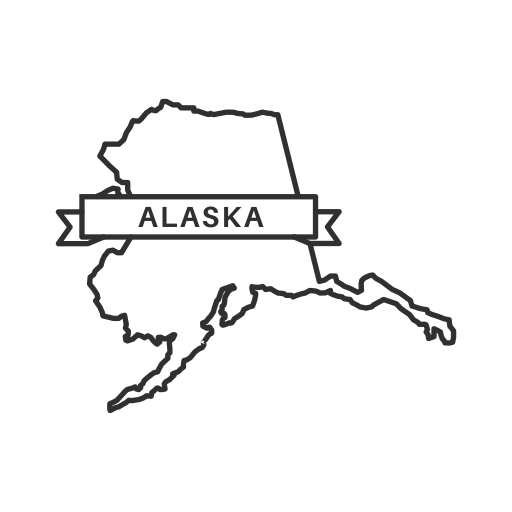Alaska Diversity Statistics 2023: Facts about Diversity in Alaska reflect the current socio-economic condition of the state.

LLCBuddy editorial team did hours of research, collected all important statistics on Alaska Diversity, and shared those on this page. Our editorial team proofread these to make the data as accurate as possible. We believe you don’t need to check any other resources on the web for the same. You should get everything here only 🙂
Are you planning to start an Alaska LLC business in 2023? Maybe for educational purposes, business research, or personal curiosity, whatever it is – it’s always a good idea to gather more information.
How much of an impact will Alaska Diversity Statistics have on your day-to-day? or the day-to-day of your LLC Business? How much does it matter directly or indirectly? You should get answers to all your questions here.
Please read the page carefully and don’t miss any word.
On this page, you’ll learn about the following:
Top Alaska Diversity Statistics 2023
☰ Use “CTRL+F” to quickly find statistics. There are total 14 Alaska Diversity Statistics on this page 🙂Alaska Diversity “Latest” Statistics
- Alaska’s population grew from 710,231 in 2010 to 733,391 in 2020, a growth of 33%.[1]
- 13.1% of Mountain View’s census tract population is African-American, which is about average nationally.[2]
- With a population density of 733,391 persons per square mile in 2020, the Last Frontier State was the least populous state, up 3.3% from 2010.[3]
- Although women made up more than half of the population aged 18 to 64 in 2017, they made up 47% of the labor force, which includes those who are employed, unemployed, or both.[4]
- Women made up 51.5% of the Hispanic or Latino population.[4]
- Despite making up 27% of the population and nearly 30% of the workforce, underrepresented minorities received 11% of S&E research doctorates.[4]
- 5.5% of people in the population were of Hispanic or Latino heritage, regardless of race, while 94.5% were not.[5]
- Asian and Pacific Island languages, which are spoken by 4.68% of the population, are the non-English language most often spoken by the greatest group of people.[6]
- The percentage of S&E research doctorates given to women in 2017 was 41%, compared to their 51.5% population and 47% labor force participation, which illustrates the underrepresentation of women in S&E disciplines.[4]
- Native Alaskans and American Indians make up slightly under 15% of the state’s overall population, making it the state with the highest percentage of American Indians in the whole U.S.[6]
- About 29% of American Indians and Alaska natives are under 18, while 21.9% of the total U.S. population is under 18.[7]
- White women, who make up 34.5% of the population but only 29% of the workforce, are primarily responsible for this disparity in population and labor force percentages.[4]
- Ten million Americans, or about 2.4% of the U.S. population, are anticipated to be American Indians and Alaska natives by 2060.[7]
- Only one county in Alaska has witnessed a population increase of over 10% since 2010; this county is the centrally situated Matanuska-Susitna Borough, which saw a growth of 12.63%.[6]
Also Read
- Alabama Diversity Statistics
- Alaska Diversity Statistics
- Arizona Diversity Statistics
- Arkansas Diversity Statistics
- California Diversity Statistics
- Colorado Diversity Statistics
- Connecticut Diversity Statistics
- Delaware Diversity Statistics
- Florida Diversity Statistics
- Georgia Diversity Statistics
- Idaho Diversity Statistics
- Illinois Diversity Statistics
- Indiana Diversity Statistics
- Iowa Diversity Statistics
- Kansas Diversity Statistics
- Kentucky Diversity Statistics
- Louisiana Diversity Statistics
- Maine Diversity Statistics
- Maryland Diversity Statistics
- Massachusetts Diversity Statistics
- Michigan Diversity Statistics
- Minnesota Diversity Statistics
- Mississippi Diversity Statistics
- Missouri Diversity Statistics
- Montana Diversity Statistics
- Nebraska Diversity Statistics
- Nevada Diversity Statistics
- New Hampshire Diversity Statistics
- New Jersey Diversity Statistics
- New Mexico Diversity Statistics
- New York Diversity Statistics
- North Carolina Diversity Statistics
- North Dakota Diversity Statistics
- Ohio Diversity Statistics
- Oklahoma Diversity Statistics
- Oregon Diversity Statistics
- Pennsylvania Diversity Statistics
- Rhode Island Diversity Statistics
- South Carolina Diversity Statistics
- South Dakota Diversity Statistics
- Tennessee Diversity Statistics
- Texas Diversity Statistics
- Utah Diversity Statistics
- Vermont Diversity Statistics
- Virginia Diversity Statistics
- Washington Diversity Statistics
- West Virginia Diversity Statistics
- Wisconsin Diversity Statistics
- Wyoming Diversity Statistics
- District of Columbia Diversity Statistics
How Useful is Alaska Diversity
Alaska’s diverse population is made up of people from all walks of life – different ages, socioeconomic backgrounds, political beliefs, and lifestyles. This diversity enriches the social fabric of the state, leading to a vibrant tapestry of ideas, perspectives, and experiences.
But how useful is this diversity, you may ask? The answer is: extremely. Diversity fuels creativity, promotes problem-solving, and enhances the overall quality of life. In a state as vast and varied as Alaska, this diversity is a valuable asset.
One of the key benefits of diversity is the multitude of perspectives it brings to the table. When people from different backgrounds come together, they each bring their own unique viewpoint, shaped by their experiences, values, and beliefs. This diversity of perspectives can lead to more thorough and thoughtful decision-making, as different viewpoints are considered and debated.
In a state like Alaska, which faces complex challenges such as climate change, economic development, and conservation of natural resources, having a diverse array of perspectives is crucial. By considering a variety of viewpoints, policymakers can craft more effective and inclusive solutions that benefit all Alaskans.
Furthermore, diversity also fosters creativity and innovation. When people with different backgrounds and experiences come together, they are more likely to approach problems from new and unique angles. This diversity of thought can lead to breakthrough ideas and solutions that would not have been possible in a more homogenous group.
Alaska’s diversity also contributes to a rich cultural landscape. From the indigenous traditions of Alaska Natives to the vibrant arts and music scenes in urban centers, the state’s diverse population brings a wealth of cultural traditions and practices that enrich the lives of all who call Alaska home.
In addition, diversity in Alaska helps to break down barriers and promote understanding among different groups. By interacting with people from diverse backgrounds, Alaskans have the opportunity to learn about and appreciate different cultures, beliefs, and ways of life. This can help to dispel stereotypes, reduce prejudice, and foster a more inclusive and understanding society.
In conclusion, the diversity of Alaska is not just a characteristic of the state, but a valuable asset that enhances the lives of all who live there. From promoting creativity and problem-solving to fostering cultural exchange and understanding, diversity in Alaska plays a critical role in shaping the state’s future. As we navigate the challenges and opportunities that lie ahead, let us embrace and celebrate the diversity that makes Alaska truly unique.
Reference
- adn – https://www.adn.com/alaska-news/2021/08/12/alaska-is-becoming-more-ethnically-diverse-and-less-white-census-data-indicates/
- cnn – https://www.cnn.com/2015/06/12/us/most-diverse-place-in-america/index.html
- census – https://www.census.gov/library/stories/state-by-state/alaska-population-change-between-census-decade.html
- nsf – https://ncses.nsf.gov/pubs/nsf19304/digest/introduction
- wikipedia – https://en.wikipedia.org/wiki/Demographics_of_Alaska
- worldpopulationreview – https://worldpopulationreview.com/states/alaska-population
- ncai – https://www.ncai.org/about-tribes/demographics
